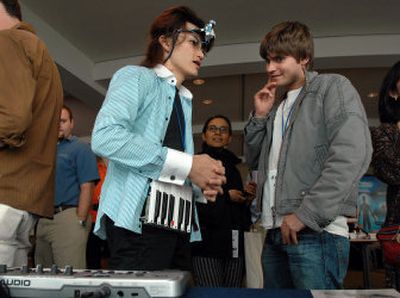Next wave of ‘wearable computers’ annotates lives with digital data

BOSTON – From clothes riddled with sensors to name tags that detect our moods, computing’s next wave could unleash small devices that augment everyday activities with even more digital intelligence.
That was the predominant vision at a conference on “wearable computing” held this week in Boston, where researchers showed off prototypes and discussed ideas.
Some attendees took wearable computing to its extreme, donning cyborg-like miniaturized displays attached to eyepieces. But most of what was on exhibit seemed much closer to jumping into a mainstream commercial product.
Researchers from the Swiss Federal Institute of Technology (known as ETH Zurich) showed off stretchable, threadlike sensors that can be woven into shirts to detect their wearers’ posture. People with back pain or injuries could be prompted on a PC or a mobile device to straighten up, pronto.
Stephane Beauregard, of Germany’s University of Bremen, displayed a shoe-borne sensor whose tiny accelerometers perform electronic dead reckoning – providing real-time location tracking in places satellite navigation systems either can’t reach or can’t describe with precision. Beauregard’s first intended market is firefighters and other emergency responders.
Graduate students at the Massachusetts Institute of Technology’s Media Lab had black plastic badges around their necks that analyze multiple factors – including motion and speech patterns – to detect the level of engagement two people are exhibiting in a conversation. Information gathered from the badges, which weigh just a few ounces and are a bit smaller than a deck of cards, can be sent wirelessly to a computer or a phone to give their wearers helpful tips. Sales reps could be advised that a customer’s interest seems to be waning. A doctor could be alerted to indications of depression in a patient being monitored remotely.
The badges might find their first use in gathering reams of data for social network analysis, the study of how groups form and interact. There’s big money in applying such research in corporations, which want to ensure that important knowledge doesn’t stay trapped in organizational silos. But a lot of data for social network analysis is gathered from e-mail traffic, which only says so much about how people connect with each other.
A prototype shown off by Carsten Mehring of the Colorado School of Mines was far more about convenience. He has embedded sensors into gloves so that snowboarders or motorists could control portable music devices with the faintest squeeze of their fingers – and nary a glance away from a snowy slope or the road.